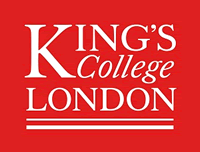About the Project
In recent years progress has been made on developing density functional theory (DFT) approaches to equation of state calculation,
and more recently an extension of DFT, called dynamical mean field theory (DMFT), has been developed to address those materials where strong electron correlation effects are present, such as d- or f-materials. Typical examples include iron, an abundant element in the earth’s mantle, or f- systems, such as Lanthanum and Cerium, who play an important role in the quest for room temperature superconductivity, as recently observed in Lanthanum hydrides (see recent summary at: https://physics.aps.org/articles/v12/1).
In this project we will use the UK implementation of DFT via the CASTEP software. A recent implementation of DMFT has been implemented at KCL within the CASTEP+DMFT software package - a project led by CW as a P.I. [1]. This implementation provides energetics and forces within the DMFT corrections applied to DFT. This now allows a quantitative description of f-band material properties.
However, at present, the structural properties of a material are still given as an input to the calculation. Recently, robust ab-initio random structure searching techniques (AIRSS) have been developed that are capable of successfully making a prediction of the lowest-energy phase structure using a standard DFT-based code. This package has been developed within CASTEP [2]. In this proposal, we propose to combine the recently developed CASTEP+DMFT package with structural predictions of materials which are subject to high pressures. A key quantity that will need to be calculated is the stress tensor. This can only be achieved with an accurate analytical calculation of forces: at present, the latter are obtained by a numerical finite difference method in CASTEP. The proposed project provides a significant step forward by implementing a recent published methodology to achieve analytical calculations of forces in DFT [3], and this will, for the first time, allow combined CASTEP+DMFT and AIRSS calculations. Furthermore, the stress tensor provides the possibility to relax structures under pressure, and at finite temperature (DMFT provides finite temperature corrections to DFT).
The obtained methodology will be unique in the UK, and more generally world-wide: no other current method allows to relax structures at given pressure via extensions of DFT, such as DMFT, in optimised plane-wave codes, such as CASTEP.
Interesting case studies will be considered, in particular the recent observation of room temperature superconductivity in hydrides and the absorption of carbon by iron based materials at geological pressures.
This project will involve close collaboration and interaction between Prof Chris Pickard (Department of Materials Science and Metallurgy, Cambridge University), who developed the AIRSS package for CASTEP, and Dr Cedric Weber (Condensed Matter and Materials Modelling Group, Department of Physics, King’s College London) who’s expertise is in developing and applying DMFT methods for materials modelling applications. The academics, who have agreed to supervise this project are acknowledged world-leading experts in the field of condensed matter physics and materials modelling.
Key Words
Dynamical mean field theory
Strongly correlated systems
Superconductivity
Many body physics
Application Procedure
To be considered for the position candidates must apply via King’s Apply online application system. Details are available at https://www.kcl.ac.uk/nms/depts/physics/Prospective%20Students/PhdResearchDegrees/index.aspx
Please indicate your desired supervisor and quote research group Theory & Simulation of Condensed Matter in your application and all correspondence.
References
1. E. Plekhanov et al., Many-body renormalisation of forces in f-materials. Submitted to Physical Review B (2018).
2. S. Clark et al., First principles methods using CASTEP. Zeitschrift fuer Kristallographie 220 567-570 (2005)
3. K. Haule et al., Forces for structural optimizations in correlated materials within a DFT+embedded DMFT functional approach. Physical Review B 94, 195146 (2016).

 Continue with Facebook
Continue with Facebook

